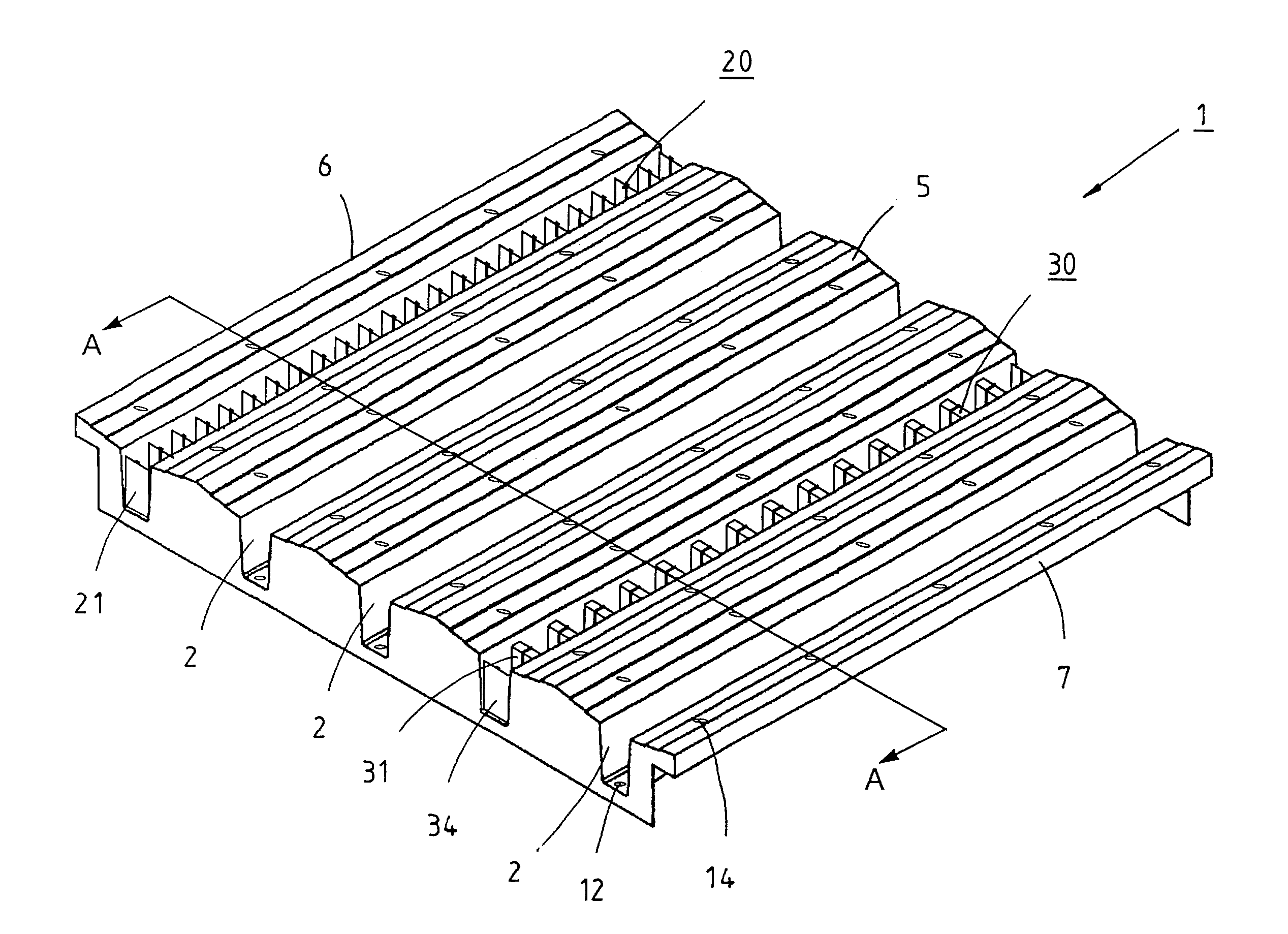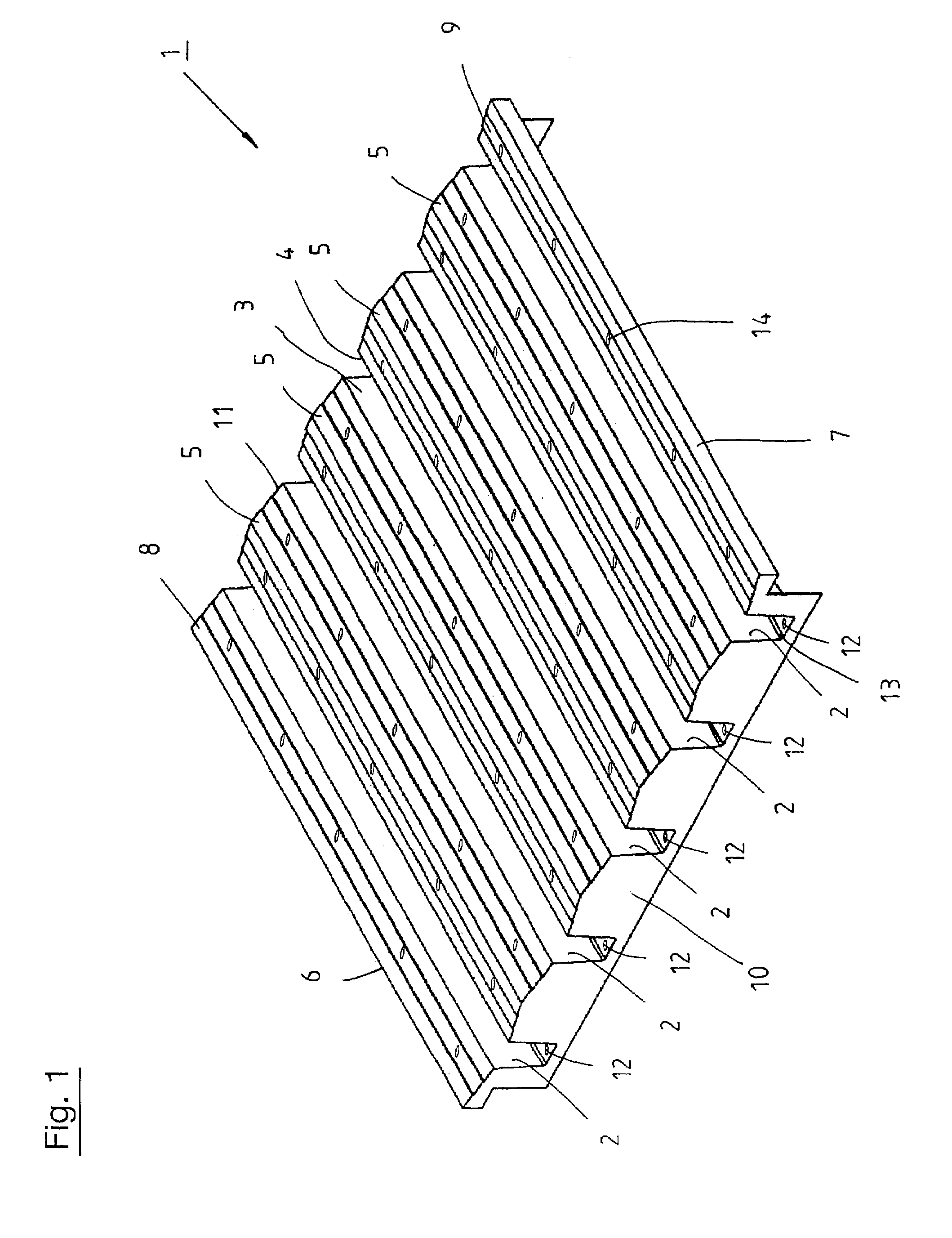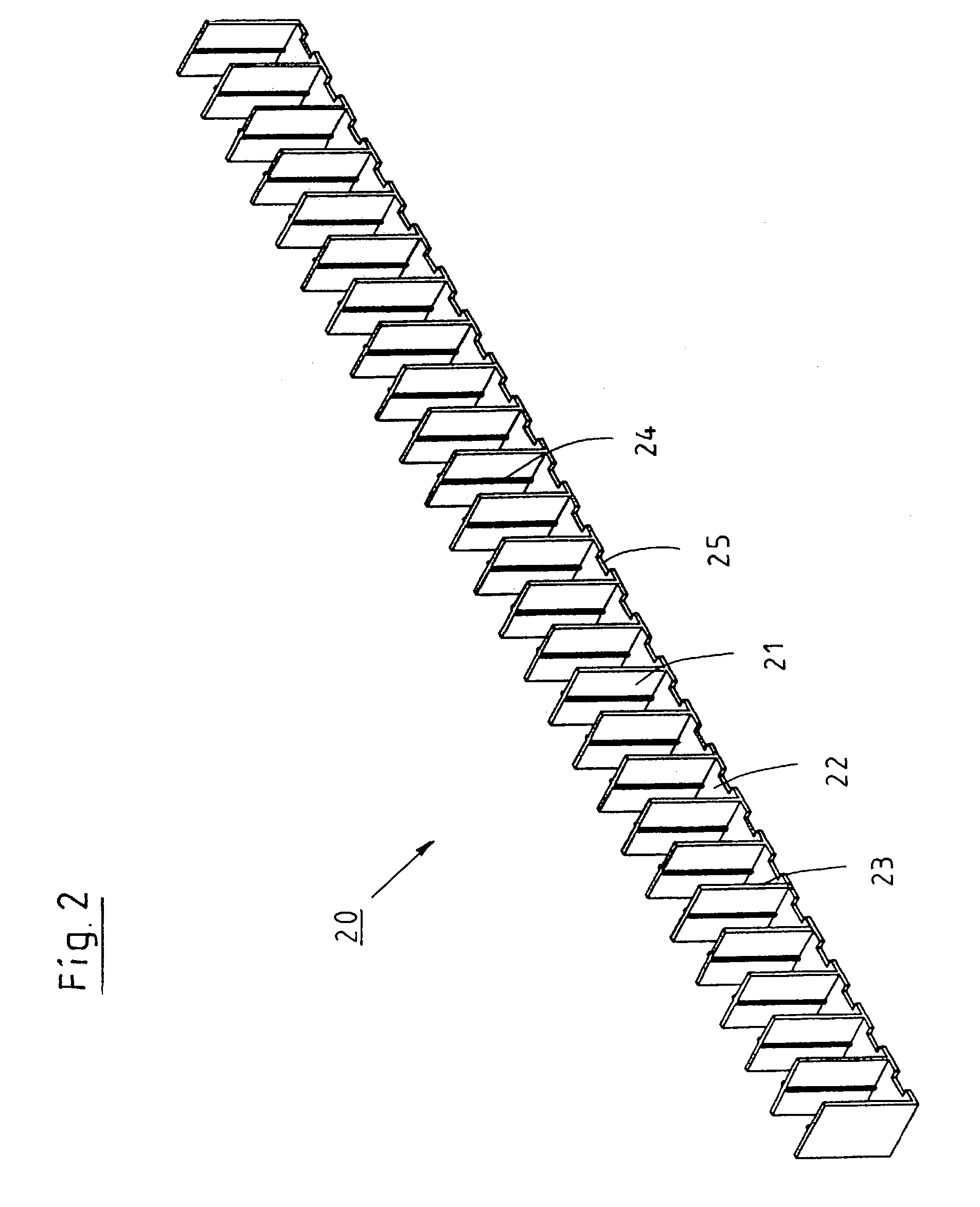Culture tray for the rooting of young plants
a technology for growing plants and trays, applied in the field of trays, can solve the problems of difficult removal of earth, damage to plants when being taken out of multiple pots, and difficulty in lifting out young plants from multiple pots, and achieve the effect of easy lateral forcing of plant bales and easy lifting
- Summary
- Abstract
- Description
- Claims
- Application Information
AI Technical Summary
Benefits of technology
Problems solved by technology
Method used
Image
Examples
Embodiment Construction
[0025]FIG. 1, being a perspective view, shows a culture tray 1 according to the invention, which can be equipped with row skeletons per FIG. 2 or 3. The culture tray 1 is basically a deep drawn plastic component which has transverse channels 2 in equidistant arrangement. It is, of course, possible to make different culture trays 1 in which the distances between the channels vary. Channels 2 have two sidewalls 3, 4 and are open towards the rim of culture tray 1. A roof-shaped elevation 5 can be seen between every two channels. Its structure is stepped in the embodiment shown. Of course, other structures are practicable provided it is made certain that the water intended for irrigation can flow down sideways into the channels 2. Each end tray 6, 7 of the culture tray 1 has one half-side elevation 8, 9 which coresponds to the shape of elevation 5 when the two culture trays 1 have been assembled. The culture tray 1 is stiffened only by means of an end closing wall 10, 11 in a manner to ...
PUM
 Login to View More
Login to View More Abstract
Description
Claims
Application Information
 Login to View More
Login to View More - R&D
- Intellectual Property
- Life Sciences
- Materials
- Tech Scout
- Unparalleled Data Quality
- Higher Quality Content
- 60% Fewer Hallucinations
Browse by: Latest US Patents, China's latest patents, Technical Efficacy Thesaurus, Application Domain, Technology Topic, Popular Technical Reports.
© 2025 PatSnap. All rights reserved.Legal|Privacy policy|Modern Slavery Act Transparency Statement|Sitemap|About US| Contact US: help@patsnap.com



